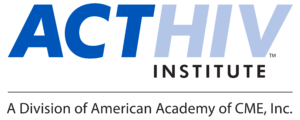Is It Safe? Safety Surveillance through the Antiretroviral Pregnancy Registry
|
Release Date: June 2, 2023 |
|
 |
Clinical Gap and Educational Need
Antiretroviral therapy should be initiated for all persons with HIV who are pregnant regardless of CD4 count according to current guidelines. There is often minimal data available to make recommendations, however, for use in pregnancy. One key consideration is safety data that includes evaluating antiretroviral agents for birth defects. Using a combination of didactic presentation and case vignettes, this free CME/CNE-Certified webinar will review the importance of the Antiretroviral Pregnancy Registry (APR), a prospective, international registry that accepts voluntary reports of prenatal exposures by treating health care providers. The webinar will also explore how clinicians and their care teams can contribute to the success of the APR by registering patients and providing follow-up information on birth outcomes.
Learning Objectives
- Describe the objectives of the Antiretroviral Pregnancy Registry (APR) and its significance for teams caring for persons with HIV who are pregnant
- Identify key findings from analysis of the APR and their implications for how the team cares for persons with HIV who are pregnant
- Describe the four steps to report a drug exposure to the APR
Activity Faculty
|
|
Target Audience
This activity has been designed to meet the educational needs of healthcare teams who provide care for persons who could become pregnant while receiving an antiretroviral agent. including physicians NPs, PAs, nurses, and pharmacists. Other healthcare providers may also participate.

In support of improving patient care, American Academy of CME, Inc. is Jointly accredited by the Accreditation Council for Continuing Medical Education (ACCME), the Accreditation Council for Pharmacy Education (ACPE), and the American Nurses Credentialing Center (ANCC), to provide continuing education for the healthcare team.
Physicians
American Academy of CME, Inc., designates this enduring material for a maximum of 1.25 AMA PRA Category 1 CreditsTM. Physicians should claim only the credit commensurate with the extent of their participation in the activity.
Nurse Practitioners and Nurses
American Academy of CME, Inc., designates this educational activity for 1.25 ANCC contact hours.
California
Provider approved by the California Board of Registered Nursing, Provider Number CEP16993 for 1.25 contact hours.
Physician Assistants
American Academy of CME, Inc. has been authorized by the American Academy of PAs (AAPA) to award AAPA Category 1 CME credit for activities planned in accordance with AAPA CME Criteria. This activity is designated for 1.25 AAPA Category 1 CME credits. Approval is valid until June 2, 2024. PAs should only claim credit commensurate with the extent of their participation.
Other members of the care team will receive a certificate of participation.
Disclosure Statement
According to the disclosure policy of the Academy, all faculty, planning committee members, editors, managers and other individuals who are in a position to control content are required to disclose any relationships with any ineligible company(ies). The existence of these relationships is not viewed as implying bias or decreasing the value of the activity. Clinical content has been reviewed for fair balance and scientific objectivity, and all of the relevant financial relationships listed for these individuals have been mitigated.
Disclosure of relevant financial relationships are as follows:
Faculty Educator/Planners
William R. Short, MD, MPH: Advisory Board/Consultant: Gilead Sciences, ViiV Healthcare; Grant/Research Support: Gilead Sciences; Speaker’s Bureau: Janssen*, ViiV Healthcare*
Lynne M. Mofenson, MD: Grant/Research Support (to her employer): ViiV Healthcare
Angela E Scheuerle, MD, FAAP, FACMG: Advisory Board/Consultant: Sanofi, Syneos, UCB Pharma, ViiV Healthcare
* relationship has ended
Planners
John JD Juchniewicz, MCIS, CHCP, FACEHP; Sondra Moylan, MS, RN; Edward Moylan RP: No relevant financial relationships to disclose.
This activity will review off-label or investigational information.
The opinions expressed in this accredited continuing education activity are those of the faculty, and do not represent those of the Academy or its ACTHIV Institute. This educational activity is intended as a supplement to existing knowledge, published information, and practice guidelines. Learners should appraise the information presented critically, and draw conclusions only after careful consideration of all available scientific information.
Implicit Bias
Implicit bias refers to unconscious attitudes and stereotypes that influence our thoughts, judgements, decisions, and actions without our awareness. Everyone is susceptible to implicit bias, even clinicians. In healthcare, implicit biases can have a significant impact on the quality of care an individual receives. These biases can be both favorable and unfavorable, and are activated involuntarily without an individual’s awareness or intentional control. Studies have indicated that healthcare providers’ incorrect perceptions can impact providers’ communications and clinical decision-making contributing to disparities in clinical outcomes. Addressing implicit biases in healthcare is critical to improving health outcomes and promoting health equity for all patients. Patient-centered care can reduce the impact of implicit bias, by treating each patient as a unique individual who may or may not hold beliefs associated with their backgrounds and circumstances. In addition, recognizing implicit bias in one’s own practice using techniques such as self-reflection and mindful clinical decision-making can ensure more equitable and effective care to all patients.
Over the past several decades, cognitive science research has demonstrated human behavior, beliefs and attitudes are shaped by automatic and unconscious cognitive processes. The healthcare profession is devoting greater attention to how these automatic and unconscious processes impact care including: (1) preferential treatment toward or against specific patient populations causing healthcare inequities, (2) influence patient-provider communications leading to misunderstandings and mistrust, and (3) impact access to healthcare and affect treatment decisions resulting in misdiagnosis, delays in treatment and specialty referrals and poor pain management. Considering one might have unconscious biases and exploring them may be uncomfortable because the very idea that they exist may conflict with how clinicians perceive themselves. It is only by becoming aware of one’s unconscious biases that members of the healthcare team can take steps to mitigate them to ensure all their patients are treated receive quality healthcare.
Instructions on How to Receive Credit
There are no fees to participate in the activity. Participants must review the activity information including the learning objectives and disclosure statements, as well as the content of the activity. To receive CME/CE credit for your participation, please complete the post-assessment and program evaluation. Your certificate will be available for printing immediately.
Privacy and Contact
For more information about the American Academy of CME privacy policy, please access http://www.academycme.org/privacy.htm For any questions, please contact: [email protected].
Hardware/Software Requirements
This program should be viewed at a resolution of 1024 x 768 or higher using current versions of Microsoft Internet Explorer, Firefox, Chrome or Safari. A high-speed Internet connection is recommended.
Copyright
© 2023. This accredited continuing education activity is held as copyrighted © by American Academy of CME. Through this notice, the Academy grants permission of its use for educational purposes only. These materials may not be used, in whole or in part, for any commercial purposes without prior permission in writing from the copyright owner(s).



